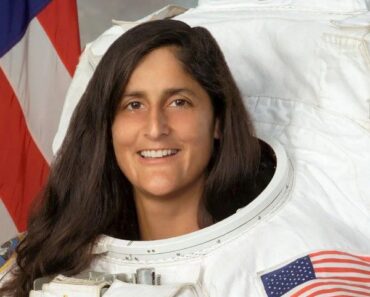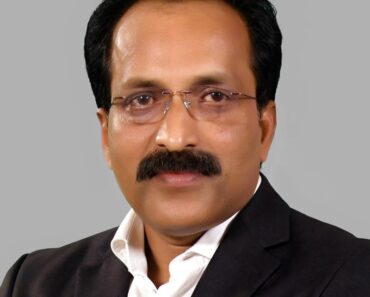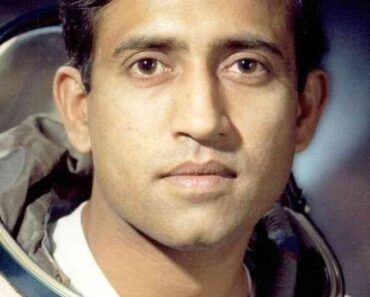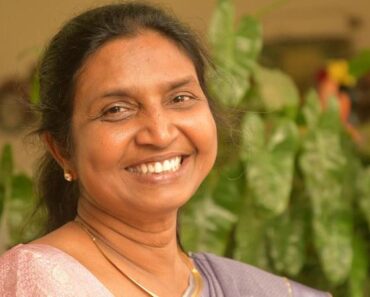 Homi Jehangir Bhabha (1909-1966) was a pioneering Indian nuclear physicist and academician, who is saluted as the ‘father of the Indian Nuclear Program’ in India. He instituted the Tata Institute of Fundamental Research (TIFR), the first Nuclear Research Centre in India. Bhabha Atomic Research Centre (BARC), which is directly overseen by the Indian Prime Minister, was also envisioned and established by Homi J. Bhabha under the name Atomic Energy Establishment, Trombay (AEET). He was also the first to hold the positions of the Secretary of the Indian Department of Atomic Energy and Chairman of the Atomic Energy Commission of India. Bhabha’s active efforts also led to the dawn of the Indian Space Programme. He was commemorated with the Padma Bhushan, Adam’s Prize, and was nominated for the Nobel Prize in Physics. He died in a plane crash on 24 January 1966 under mysterious circumstances.
Homi Jehangir Bhabha (1909-1966) was a pioneering Indian nuclear physicist and academician, who is saluted as the ‘father of the Indian Nuclear Program’ in India. He instituted the Tata Institute of Fundamental Research (TIFR), the first Nuclear Research Centre in India. Bhabha Atomic Research Centre (BARC), which is directly overseen by the Indian Prime Minister, was also envisioned and established by Homi J. Bhabha under the name Atomic Energy Establishment, Trombay (AEET). He was also the first to hold the positions of the Secretary of the Indian Department of Atomic Energy and Chairman of the Atomic Energy Commission of India. Bhabha’s active efforts also led to the dawn of the Indian Space Programme. He was commemorated with the Padma Bhushan, Adam’s Prize, and was nominated for the Nobel Prize in Physics. He died in a plane crash on 24 January 1966 under mysterious circumstances.
Wiki/Biography
Homi J. Bhabha was born on Saturday, 30 October 1909 (age 56 years; at the time of death) in Bombay Province (now Mumbai). His zodiac sign is Scorpio. He grew up in a rich, well-cultured, westernised, Parsi family that exposed his mind to arts, science, industry, education, and aesthetics. His childhood was spent among well-educated influential figures who were involved in nation-building.
Homi J. Bhabha pursued primary education at Cathedral and John Connon School, Mumbai, which fostered his love for science.
At the age of 15, he passed Senior Cambridge with honours, and since he was too young a candidate to be enrolled in a foreign college, he returned to India and enrolled in Elphinstone College, Bombay. Later, he joined the Royal Institute of Science. In 1927, he was sent to Gonville and Caius (Cambridge University), England, to fulfil both his father’s and uncle’s dream to become a mechanical engineer and join Tata Iron and Steel Company at Jamshedpur. However, within a year, he realised that he wanted to contribute to the advancement of theoretical physics. In a letter to his father, he said,
…I am burning with a desire to do physics. I will and must do it sometime. It is my only ambition. I have no desire to be a “successful” man or the head of a big firm…It is no use saying to Beethoven “You must be a scientist for it is great thing” when he did not care two hoots for science; or to Socrates “Be an engineer; it is work of intelligent man”. It is not in the nature of things. I therefore earnestly implore you to let me do physics.”
His father agreed to his request on the condition that he would first complete his engineering course, which he did in first grade. In 1930, Bhabha turned to theoretical physics and joined the prestigious Cavendish Laboratory as a PhD student, where R. H. Fowler was his guide. Here, from the age of 17 to 29 years, he was associated with the greatest physicists like Oppenheimer, Rutherford, Neils Bohr, Cockcroft, Blackett, and Yuli Khariton and later met Albert Einstein and many more until he became the master of nuclear physics and travelled to India with expertise in nuclear physics that helped him develop a vision to make India a nuclear power.

Albert Einstein, Hideki Yukawa, John Wheeler, and Homi Bhabha (from left to right), taking a walk at the Institute of Advanced Studies in Princeton in 1954
Physical Appearance
Hair Colour: Black
Eye Colour: Black
Height (approx.): 5′ 6″
Family
Homi J. Bhabha belonged to a privileged Parsi family who enjoyed a wealthy courtly life in pre-independent India.
Parents & Siblings
Homi J. Bhabha’s mother, Meherbai Framji Pandey, was a homemaker. She was the daughter of Bhikaji Framji Pandey and granddaughter of an entrepreneur, Sir Dinshaw Maneckji Petit, the First Baronet who had a reputation in Bombay for his philanthropic endowments. Meherbai developed Bhabha’s taste for painting, gardening and music. His father, Jehangir Hormusji Bhabha was a reputed Barrister-at-Law in Bombay. He had a younger brother, Dr. Jamshed Bhabha, founder of the National Centre for the Performing Arts (NCPA).

(From left to right) Homi J. Bhabha, Meherbai Framji Panday, Jehangir Hormusji Bhabha (standing), and Jamshed Bhabha
Wife & Children
Home J. Bhabha was unmarried and had no children. He said,
I am married to creativity.”
Other Relatives
Bhabha’s grandfather was Hormusji Bhabha, after whom Bhabha was named ‘Hormusji.’ He was the Inspector General of Education in Mysore (now, Mysuru), Karnataka.
Meherbai Tata was Bhabha’s paternal aunt, a philanthropist who campaigned for women’s empowerment in the British Era and the first female tennis player to feature in the Olympics. Dorabji Tata, the wealthiest Indian industrialist of the British Era and husband of Meherbai was Bhabha’s paternal uncle.
Signature/Autograph
Career
Cambridge Years
- In 1935, Bhabha published a paper, explaining the relativistic exchange scattering, which later came to be known as the ‘Bhabha scattering.’ In this theory, he calculated the cross-section of electron-positron scattering. He was the first one to discover this.
- His theory on the production of positron and electron showers in cosmic rays along with the German scientist W. Heitler was published in 1937 and became a great contribution to theoretical physics.
- Homi J. Bhabha hypothesised that there must be an existence of a new particle with the same characteristics as that of an electron but 100 times heavier. This was proved later, in 1936, when ‘muon’ was discovered by Carl D. Anderson and Seth Neddermeyer. A muon is 200 times heavier than an electron.
- Homi J. Bhabha also formulated that cosmic rays, moving at the speed of light, give an accurate setting for the verification of Albert Einstein’s phenomenon of the ‘Theory of Relativity.’
Cecil Powell (Nobel Prize Winner), a notable physicist, praised Homi J. Bhabha for his explanation of the cosmic shower development. He said;
Homi Bhabha made decisive contributions to our understanding of how they (the showers) developed in terms of electromagnetic processes. He was also well-known at this time for his attempts to account for those elementary particles then known to exist by a method using group theory. He was thus a very early exponent of those methods used many years later for a similar purpose by Gell-Mann and others.”
The Years at the Indian Institute of Science (IISc)
In September 1939, before the onset of WWII, Bhabha returned to India from England and joined the Indian Institute of Science (IISc), Bangalore, which was funded by his relative, Jamsetji Nussarwanji Tata, where a special readership in theoretical physics was created for him. Later, he was made the head of the Cosmic Ray Unit. This institution was then headed by Dr. C. V. Raman (a Nobel Laureate in Physics) who later described Bhabha as the modern equivalent of Leonardo da Vinci.
- In 1942, he led the Cosmic Ray Unit of IISc and organized a group of young researchers in experimental and theoretical aspects of Cosmic Ray Research.
- Bhabha worked on the ‘Bhabha-Corben’ equations, which involved relativistic equations of higher spin. He wanted to generalize the Dirac equation to treat the effect of a larger number of soft radiation quanta, using a classical wave field (coherent state of the radiation quanta).
- Homi J. Bhabha worked on the ‘meson theory’, and could predict the isobar states of the meson-nucleon system by generalizing mesons as vector particles, which in Yukawa’s theory on mesons was taken as scalar particles. He also explained the meson theory through cosmic ray phenomenology. These discoveries served as a precursor to further understanding of the nuclear forces.
Creation of Tata Institute of Fundamental Research
Homi J. Bhabha is credited for creating the first research institute for nuclear studies involving physics in India. In a letter written to J. R. D. Tata, Bhabha discussed the need to establish such a research institute in India. He wrote,
The lack of proper conditions and intelligent financial support hampers the development of science in India at the pace the talent in the country would warrant.”
This concern was then formally addressed to Dorabji Tata Trust, where he requested funds for establishing a ‘vigorous school of research in fundamental physics.’ ((Institute for Defence Studies and Analyses)). Bhabha’s proposal was accepted, and in June 1945, the Tata Institute for Fundamental Research (TIFR) was inaugurated in the Cosmic Ray Research Unit of IISc and then, in October 1945, was moved to Bombay.
At TIFR, Bhabha continued his research in cosmic rays, high-energy physics, mathematics, and other experimental work. He emphasized the scope of mathematics to understand nature’s phenomena in a famous speech. Accordingly, the Department of Mathematics was opened in the institute. Homi J. Bhabha became the Director of TIFR on 1 June 1945 and remained till 1966, until his death.
Atomic Energy Programme in India
- After fully laying the foundation of research in nuclear physics, Homi J. Bhabha requested the nation’s young scientists studying abroad to “return to their motherland, Trombay,” listening to which many came back to Trombay, India. Bhabha promised to provide them with the necessary amenities and took personal care of them. His further move was to request the then Prime Minister, Pandit Jawaharlal Nehru, to set up an Atomic Energy Commission in India. Homi J. Bhabha became the first Chairman of the Atomic Energy Commission (AEC), which was established on 10 August 1948. Work details of this organisation were kept confidential with only conversations between Bhabha and Nehru. In 1954, the Atomic Energy Establishment Trombay (AEET) was established as a new laboratory to conduct Bhabha’s dream of making India a nuclear power. At the same time, he was appointed Secretary of the Department of Atomic Energy. With this, the Atomic Energy Department was made a separate Ministry.
- In 1954, at the Conference on the Development of Atomic Energy for Peaceful Purposes in New Delhi, Bhabha presented his vision of extracting power from the thorium reserves instead of uranium as their presence is ten times that of the uranium reserves. His three-stage proposal for the same was a turning point for the Indian Atomic Era, which he summarised as;
The total reserves of thorium in India amount to over 500,000 tons in the readily extractable form, while the known reserves of uranium are less than a tenth of this. The aim of a long-range atomic power programme in India must therefore be to base the nuclear power generation as soon as possible on thorium rather than uranium… The first generation of atomic power stations based on natural uranium can only be used to start an atomic power programme… The plutonium produced by the first-generation of power stations can be used in a second-generation of power stations designed to produce electric power and convert thorium into U-233, or depleted uranium into more plutonium with breeding gain… The second generation of power stations may be regarded as an intermediate step for the breeder power stations of the third generation all of which would produce more U-238 than they burn in the course of producing power.
- In 1956, Bhabha’s efforts got India its first nuclear reactor, APSARA, making India the first Asian country besides the Soviet Union to have it. Later, CIRUS (in collaboration with Canada), Phoenix, and ZERLINA helped India produce its first weapons-grade plutonium.
- Homi J. Bhabha was the first to organize the very first UN Conference on the Peaceful Uses of Atomic Energy, and in the 1950s, he represented India at the International Atomic Energy Agency conferences as its President.
- In 1959, Bhabha told the Indian Parliamentary Consultative Committee on Atomic Energy that India had reached a stage, where it could develop its nuclear weapons without any foreign aid.
- In a meeting with Kenneth Nicols (a Major General in the US Army) and Jawaharlal Nehru in 1960, Bhabha informed a rough duration of one year for India to build an atomic bomb.
- After Project 596 (a nuclear test conducted by China in 1964), Bhabha publically announced India’s nuclear programme. However, Prime Minister Lal Bahadur Shastri was not in favour of funding this programme as he believed that the food crisis was more of a concern in India during those days. After long events unfolding, Bhabha realised that an 18-month period was too short time to build an atomic bomb. He secretly conducted meetings with US officials between 1964 and 1965 to import designs and elements required for building nuclear explosives. However, before he could see the outcome of his vision, ‘the Father of the Indian Nuclear Programme’ died under mysterious circumstances.
- After Homi J. Bhabha’s death, the Atomic Energy Establishment, Trombay (AEET) was renamed the Bhabha Atomic Research Centre and on 18 May 1974, and with the success of Pokhran I, India fulfilled Bhabha’s dream of putting it on the world map of nuclear science.
Religion
Homi J. Bhabha was a Parsi and followed Zoroastrianism. ((The Princeton University))
Awards and Honours
- Fellow of the Royal Society – 1941
- Adams Prize for the thesis on “The Theory of elementary physical particles and their interactions” in 1942
- Padma Bhushan, India’s third-highest civilian award, in 1954
Note: Homi J. Bhabha was awarded an honorary fellowship by various universities
Legacy
- After the death of Homi J. Bhabha, he was commemorated with a picture postcard for his contribution to India’s Atomic Energy Research; the postcard shows the Atomic Research Centre, Trombay, on the left, and Homi J. Bhabha’s picture on the right.
- The Atomic Energy Establishment in Mumbai was renamed the Bhabha Atomic Research Centre after his death.
- Since 1967, the Homi Bhabha Fellowships have been awarded by The Homi Bhabha Fellowship Council.
- Noted institutions like the Homi Bhabha National Institute, Centre for Science Education, Mumbai, India, and an Indian-deemed university, have been established after his name.
- The Auditorium of the Tata Institute for Fundamental Research (TIFR) is named after Homi J. Bhabha. This was done after Bhabha’s life was showcased at the Royal Society. The Homi Bhabha auditorium was inaugurated by Prime Minister Indira Gandhi.
- A bust statue of Homi Jehangir Bhabha is placed in the garden of the Birla Industrial & Technological Museum, Kolkata.
Death
Homi J. Bhabha died on 24 January 1966 in a plane crash. He was on his way to Vienna for the International Atomic Energy Agency’s Conference in an Air India Boeing 707 when his aircraft crashed near Mont Blac in the Swiss Alps. His death remains a mystery and sparked a tangled web of conspiracies involving foreign countries, and espionage. The official reason for the plane crash was reported as miscommunication between the Geneva Airport and the Indian flight’s captain about its position near Mount Blanc. However, scholars believed that his death was conspired by the world powers to paralyze India’s nuclear power program as Bhabha had openly promised in an All India Radio Speech to make an Atom Bomb for India in the next one and a half years. ((The Diplomat)) The conspiracy hinted at the direct involvement of the Central Intelligence Agency (CIA) in assassinating Homi J. Bhabha and Lal Bahadur Shastri, the Indian Prime Minister who surprisingly died 13 days before Bhabha in Tashkent, Uzbekistan, under mysterious circumstances, ((The Times of India)) ((Wion)) where he went for the Tashkent Declaration ((The Times of India)). American journalist Gregory Douglas’ book Conversations with a Crow‘ gives an insight gives an insight into Bhabha’s death conspiracy. It is based on interviews with CIA officials. Homi J. Bhabha was 56 years old at the time of his death.

Conversations with the Crow- Popular book that talks about Homi J. Bhabha’s death conspiracy from CIA perspective
Facts/Trivia
- Homi J. Bhabha had mastered Einstein’s “theory of relativity, “even before he sat for his Senior Secondary (Cambridge) exams.
- Homi J. Bhabha was well-versed in various languages including Latin and French.
- Bhabha was a music lover, and he loved to play the violin and the piano.
- He showed his interest in science as a child when Meccano sets were his favourite toys, which he played by building his models rather than following the guiding booklets.
- In his childhood days, Bhabha used to sleep less, which became a cause of concern for his parents but on seeing several doctors, the reason could not be figured out as Bhabha’s health was all well. It was then concluded that because of his active brain, he was always in a state of rapid flow of thoughts, and he thus slept less than the children of his age.
- Being the nephew of Dorabji Tata and Lady Meherbai Tata, Bhabha was acquainted with intellectual conversations involving freedom fighters, like Mahatma Gandhi, and various business traders associated with heavy chemicals, steel, and hydroelectric power industries.
- Bhabha, in his college days, seriously decided to take arts as a career as he was praised by Roger Fry (an English art critic and artist) for his sketches but Cavendish Laboratory’s work made him excited to work as a theoretical physicist. He had also designed sets for the Cambridge Musical Society for Mozart’s ‘Idomeneo’ and the play ‘Life Is A Dream’ by Pedro Calderón de la Barca. He was also a patron of the Progressive Artists Group in Bombay, which produced artists like S. H. Raza.
- Bhabha joined the Cavendish Laboratory in 1930 as he was inspired by Cambridge’s scientific temperament, where scientific discoveries like the existence of ‘positrons,’ the discovery of neutrons by James Chadwick, the formulation of the Dirac Equation, etc. happened.
- When Bhabha was 17 years old, his self-portrait won second prize at the Bombay Art Exhibition. He sketched Prof. C.V. Raman during his IISc. days.
- In 1959, Homi J. Bhabha proposed a solution to India’s population problem.
- A 2022 web series titled ‘Rocket Boys’ is inspired by Homi J. Bhabha’s life in which his role was portrayed by Jim Sarbh.
- Homi J. Bhabha was an expert on trees, plants, and flowers. He kept books on gardening in the house’s large private library. He had a terrace garden of exotic plants and cross-bred bougainvillaea and roses. ((The Wire))
- India’s first-ever atomic bomb was detonated right after 8 years of Homi J. Bhabha’s death ((India Today)). The operation was named Operation Smiling Buddha or Operation Happy Krishna.
- One of the world’s largest steerable telescopes, Ooty Radio Telescope, ((The Print)) was an initiative of Homi J. Bhabha.





























